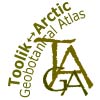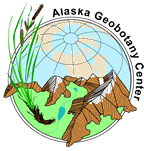Toolik Lake Permanent Vegetation Plots
Walker D.A. and Barry N. 1991. Toolik Lake permanent vegetation plots: site factors, soil physical and chemical properties, plant species cover, photographs, and soil descriptions. Data Report 48, Department of Energy R4D Program, Institute of Arctic and Alpine Research, University of Colorado, Boulder, CO.
Home // Plot location map // Preliminary vegetation classification // Communities and microsites // Environmental variables // Environmental information: Abiotic data, Biotic data // Soils Characteristics // Species Composition // Selected Soil Descriptions // Plot Photos
Table 3. Legend for the environmental variables
Error 1129: Host 'grotto.geobotany.uaf.edu' is blocked because of many connection errors; unblock with 'mysqladmin flush-hosts'

